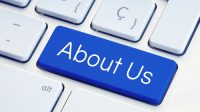Delirium Instruments
Dr. Sharon Inouye and colleagues have developed several instruments for the recognition and diagnosis of delirium. All instruments, training manuals, and recommendations for use can be accessed at the below links.
Confusion Assessment Method (CAM-short) – The Short CAM contains the 4 items of the CAM diagnostic algorithm. These are the first 4 items of the full 10-item CAM.
Recommended use: most widely used method for detection of delirium for both clinical and research applications. Should be scored on the basis of cognitive screening tests (e.g. SPMSQ or Mini-Cog).
Translations available in Arabic, Chinese, Danish, Dutch, French, German, Greek, Hebrew, Italian, Portuguese, Sinhalese, Spanish, and Swedish.
Confusion Assessment Method (CAM-Long) – This 10-item tool is the gold standard for delirium identification in research situations.
Recommended use: broad research and clinical applications. Considered the gold standard for rating delirium– including diagnosis, severity, and behavioral subtype.
![]()
| Instrument | Training Materials |
|---|---|
| Training Manual | |
| Long CAM – Arabic | Training Video |
| Long CAM – Czech | |
| Long CAM – Portuguese (Portugal) | |
| Long CAM – Sinhalese | |
FAM-CAM (Family Assessment of Delirium) – The FAM-CAM is designed to be used with family caregivers to enhance the recognition of delirium.
Recommended use: family assessment in research or clinical situations
3D-CAM (Brief Cognitive Screen with CAM) – The 3D-CAM is a 3-minute diagnostic assessment of delirium.
Recommended use: quick assessment of delirium in research or clinical situations
Ultra-Brief Confusion Assessment Method (UB CAM)- A two-step protocol with skip pattern involving a clinician-administered two-item interview (UB-2), followed, when positive, by a short interview (3D-CAM) and rating scale that uses verbal responses and observations by the rater to rate the Confusion Assessment Method (CAM) diagnostic algorithm. The following skip pattern is applied—as soon as one incorrect answer or positive patient symptom report or interview observation is positive, the remainder of the items in that CAM feature can be skipped.
| Instrument | Training Materials |
|---|---|
| UB-CAM – English | |
| UB-CAM – Chinese | Intro to UB-CAM Blog Post – English |
CHART-DEL (Chart-Based Delirium Identification Instrument) – Chart-based Delirium Identification Instrument.
The CHART-DEL is a validated method that can be used to review charts (medical records) to detect the presence of delirium.
| Instrument | Training Manual |
|---|---|
| CHART-DEL – English | Training Manual – English |
| CHART-DEL Instrument and Training Manual – Farsi |
CAM-S (Delirium Severity Scoring) – The CAM-S measures delirium severity based on the Short or Long CAM assessments.
Recommended use: assessment of delirium severity in research or clinical situations
| CAM-S Scoring | Training Manual |
|---|---|
| CAM-S (Delirium Severity Scoring) – English | Training Manual – English |
Delirium Burden Instruments (DEL-B) – validated as a key first step in reliably measuring and evaluating the distress of delirium.
Recommended use: intended to be used to quantify the burden of an acute delirium episode (lasting hours to days) on adult patients and their family caregivers.
| Instrument | |
|---|---|
| DEL-B Caregiver – English | |
| DEL-B Patient – English |






